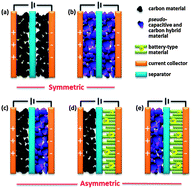Advanced porous carbon electrodes for electrochemical capacitors
Abstract
It is not an exaggeration to say that successful development of any renewable energy source (e.g., windmills and solar cells), hybrid and electric vehicles, and smart grids depends significantly upon the availability of a suitable energy storage system. Electrochemical capacitors (ECs, also known as supercapacitors or ultracapacitors) are one of the electrochemical energy storage systems that can store and release energy at a pulse power. Commercial ECs based on activated carbon electrodes have a fairly low energy density, which is mainly due to the ill-defined physical and chemical properties of the activated carbon. Hence, the past decade has witnessed a rapid growth in the R&D of new carbon and carbon-based materials for ECs. Ideally, a carbon electrode should possess a high specific surface area (SSA) accessible to electrolyte ions, three-dimensional pores of appropriate sizes, good electrical conductivity, excellent stability against harsh environments (e.g., a wide range of temperatures, various electrolytes, and stress), flexibility, easy processability, compatibility with other materials (e.g., a current collector), and of course low cost. Integrating these features (and sometimes beyond) in one solid is one of the research frontiers. This feature article provides a brief review of advanced porous carbon materials with some or all of the above features that have been developed over the past few years.

- This article is part of the themed collection: Porous Carbon Materials

 Please wait while we load your content...
Please wait while we load your content...